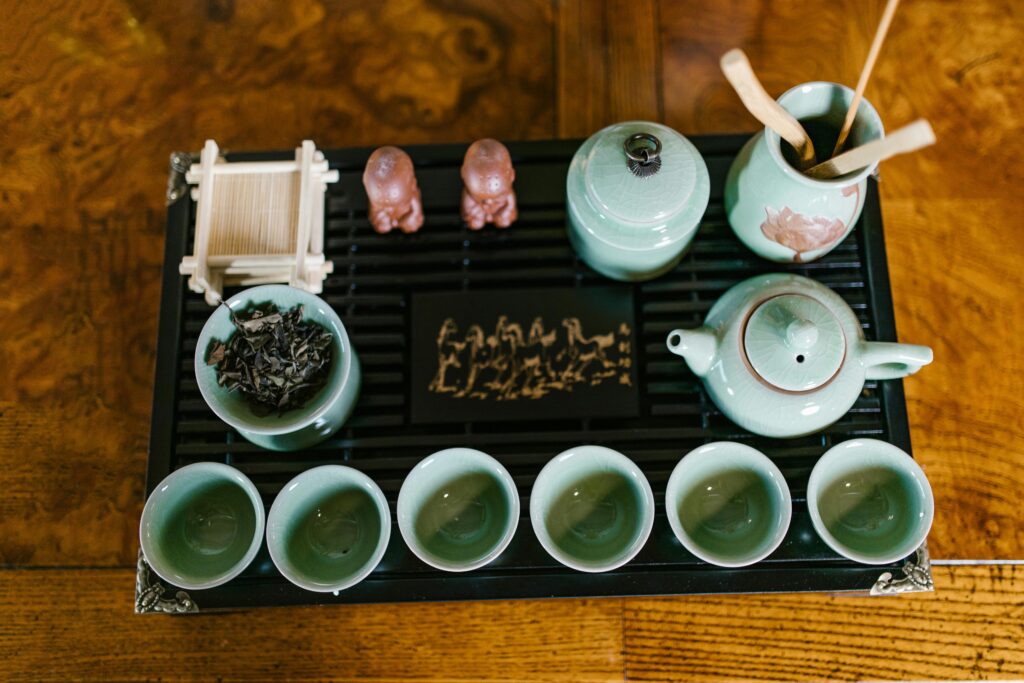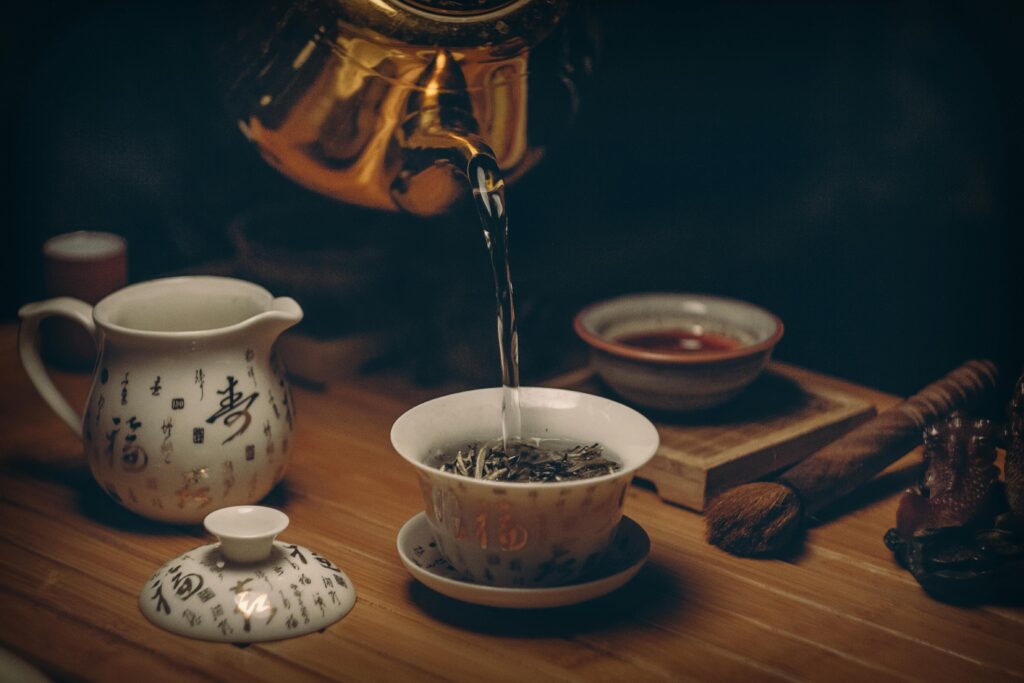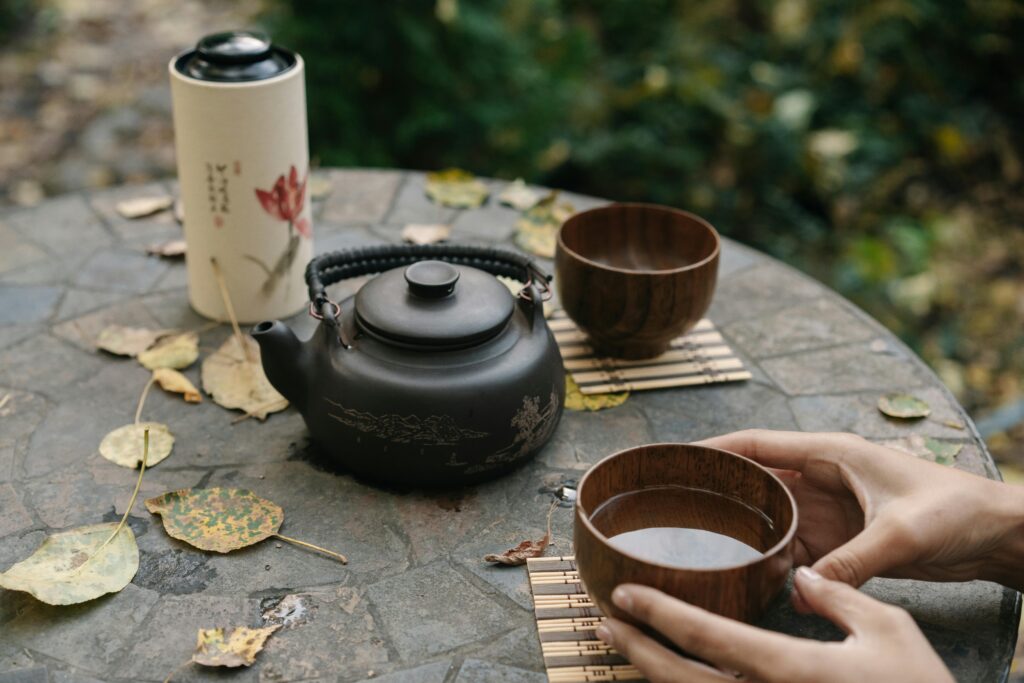In a world that feels increasingly fast-paced and overwhelming, people are searching for small, meaningful ways to pause and reconnect with themselves. One of the most universal yet overlooked practices is the simple act of drinking tea. But this isn’t just about sipping a warm beverage—it’s about the psychology of ritual and how tea drinking reduces stress.
Understanding the Role of Rituals in Human Psychology
Why Rituals Calm the Mind
Rituals create a sense of order in the chaos of daily life. Whether it’s morning meditation, bedtime routines, or preparing a cup of tea, rituals provide comfort through predictability. This structure reduces cognitive load, helping the brain feel safe and less anxious.
The Connection Between Rituals and Stress Reduction
When we engage in rituals, our minds switch into a focused yet relaxed state. Psychologists describe this as “flow,” a mental zone where distractions fade. Rituals like tea drinking encourage mindfulness, slowing down heart rate and activating the body’s natural relaxation response.
The Ritual of Tea Drinking Through History
Tea is not just a drink—it is a practice woven into the fabric of human culture for thousands of years. Across civilizations, tea rituals have symbolized health, mindfulness, community, and spirituality. To understand how tea drinking reduces stress today, it helps to look at how ancient traditions shaped the psychology of tea as a calming ritual.
Tea in Ancient Traditions
The earliest records of tea drinking date back to China over 4,000 years ago, where legend says Emperor Shen Nong discovered tea when tea leaves accidentally blew into his pot of boiling water. Beyond refreshment, tea was valued for its healing properties. Traditional Chinese medicine prescribed teas for balancing energy (Qi), soothing the spirit, and calming the body.
In India, tea has long been part of Ayurvedic practices. Herbal infusions and tisanes were prepared with spices like tulsi, ginger, and cardamom to reduce stress, improve digestion, and restore inner balance. These blends were seen not only as medicine but as rituals of self-care, aligning body and mind.
In both China and India, the act of preparing and consuming tea was not rushed. Instead, it was intentional—a meditative process that mirrored the natural rhythms of life.
Tea Ceremonies in Japan and China
As tea spread across Asia, it evolved into highly structured and symbolic ceremonies.
- Chinese Gongfu Tea Ceremony
Originating during the Song Dynasty, this ceremony emphasized skillful preparation of tea using small clay teapots and precise movements. The term gongfu translates to “skill achieved through effort,” reflecting how tea preparation itself became a mindfulness practice. Every gesture—pouring, steeping, and serving—was performed with care, fostering relaxation and presence. - Japanese Chanoyu (The Way of Tea)
Introduced from China, tea developed into a uniquely Japanese spiritual practice. The chanoyu, influenced by Zen Buddhism, became a highly ritualized art form. Each detail—the choice of utensils, the aesthetic of the tea room, the silence between host and guest—was designed to cultivate harmony, respect, purity, and tranquility. This ceremony showed how tea drinking could be elevated beyond nourishment into a sacred meditation on simplicity and peace.
Both traditions positioned tea as a ritual that slowed down time, encouraged mindfulness, and created a bridge between the physical and the spiritual world.

Tea as a Cultural and Spiritual Symbol
Tea eventually spread to the Middle East and Europe through trade, transforming from a medicinal drink into a social and cultural ritual.
- In the Middle East, tea became a symbol of hospitality, offered generously to guests as a sign of respect and welcome.
- In Britain, the rise of “afternoon tea” in the 19th century created a structured daily pause. What started as a light meal between lunch and dinner evolved into a ritual of relaxation, conversation, and refinement—still celebrated today.
- In Russia, the samovar tradition made tea the centerpiece of family and community gatherings, symbolizing warmth, unity, and togetherness.
In every culture, tea drinking went beyond its taste or health benefits. It carried symbolic meaning, offering people a way to step out of daily chaos and into a shared moment of stillness, reflection, or community.
The Role of Rituals in Stress Management: A Deeper Look
Humans are creatures of habit. Our brains crave predictability because it creates a sense of security. When we wake up and follow a morning routine—brushing teeth, showering, having breakfast—we are not just performing chores. We are unconsciously calming our nervous system by engaging in structured actions.
Psychologists argue that rituals reduce uncertainty, which is one of the biggest drivers of stress. Think about athletes before a game—many have small rituals like tying shoes a certain way or listening to the same song. These rituals center their minds, reduce performance anxiety, and create psychological stability.
Tea drinking functions in the same way. Even if it lasts just five minutes, the act becomes a micro-ritual, reducing stress by providing consistency, comfort, and a sensory anchor.
The Neuroscience of Tea Rituals
Beyond psychology, neuroscience explains why tea rituals work so effectively. When you engage in the repeated, calming motions of preparing tea, the brain’s parasympathetic nervous system is activated. This system is responsible for “rest and digest” functions, slowing the heart rate and lowering cortisol levels.
Additionally, the sensory elements—aroma, taste, and warmth—trigger the release of dopamine and endorphins, which promote relaxation and pleasure. The repetition of the ritual builds neural pathways that associate tea drinking with calmness, making it a conditioned stress-relief response over time.
The Symbolic Power of Tea Rituals
Rituals are not just about actions; they carry symbolic meaning. Holding a warm cup of tea can symbolize comfort, self-care, and taking a pause in a busy life. This symbolism strengthens the psychological impact.
For example:
- In Japan, the tea ceremony (chanoyu) is not about quenching thirst but about appreciating beauty, harmony, and mindfulness.
- In Britain, “afternoon tea” evolved as a cultural pause in the middle of the day, symbolizing both relaxation and social connection.
- In India, chai is more than a beverage—it is a bonding ritual shared among family and friends.
When you incorporate a tea ritual into your day, you’re not just drinking tea—you’re tapping into centuries of cultural wisdom around rest and human connection.
Modern Applications: Tea as a Mindfulness Tool
In today’s fast-paced world, many people struggle to meditate because sitting still feels difficult. Tea rituals bridge the gap between meditation and daily life. You don’t have to sit in silence for 30 minutes—simply brewing and sipping tea can serve as a gateway to mindfulness.
Practical Tip: Try the 5-4-3-2-1 Tea Mindfulness Exercise while drinking tea:
- 5 things you see (steam rising, tea leaves floating, cup design).
- 4 things you feel (warmth of cup, chair, air, table texture).
- 3 things you hear (water boiling, spoon clinking, silence).
- 2 things you smell (tea aroma, maybe another background scent).
- 1 thing you taste (the distinct flavor of the tea).
This transforms a simple cup of tea into a grounding mindfulness practice.
Tea Drinking and Social Connection
Stress often feels heavier when carried alone. Sharing tea with others transforms an individual ritual into a social one. Research shows that social rituals—like having tea with friends—boost oxytocin levels, creating feelings of safety, trust, and belonging.
This is why tea shops and tea houses are more than businesses; they are community spaces. Hosting a “tea ritual” at home with family or friends can also deepen bonds and reduce collective stress.
Case Study: Tea Rituals for Workplace Stress
Modern workplaces are hotspots for stress. Studies reveal that even a 10-minute tea break can significantly improve mood and productivity. Unlike coffee, which is associated with energy and work, tea breaks encourage relaxation and conversation.
Some companies in Japan and Europe now encourage employees to engage in tea mindfulness sessions, where workers prepare and drink tea slowly before returning to tasks. Early reports suggest it boosts focus while reducing burnout.
Creating Your Own Tea Ritual: Step-by-Step Example
Here’s a simple 15-minute tea ritual anyone can try:
- Set Your Space – Choose a quiet spot, free from digital distractions.
- Boil Water Mindfully – Listen to the bubbling sound as the water heats.
- Choose Your Tea Intentionally – Pick one based on your emotional need (chamomile for relaxation, peppermint for refreshment, green tea for focus).
- Steep Slowly – Watch as colors change in the water.
- Breathe Deeply Before Drinking – Inhale the aroma to engage your senses.
- Sip with Awareness – Take small sips, noticing the flavor and warmth.
- Reflect – After finishing, take one minute to notice how your body feels.
By repeating this ritual daily, you train your brain to associate tea time with calmness, much like meditation.
Linking Rituals with Other Stress-Relief Practices
Tea rituals are powerful on their own, but they become even more effective when combined with other practices:
- Tea + Journaling → Use tea time to write gratitude notes.
- Tea + Meditation → Drink tea before or after a short meditation session.
- Tea + Aromatherapy → Pair herbal teas with essential oils like lavender.
- Tea + Evening Routine → Replace late-night screen time with a calming tea ritual before bed.
This holistic integration turns tea drinking into a cornerstone of stress management.
FAQs (Expanded)

7. Can children benefit from tea rituals for stress?
Yes, caffeine-free herbal teas like chamomile or rooibos can help children relax before bed. The ritual aspect also provides comfort and routine.
8. Is there a difference between loose-leaf and tea bags for rituals?
Loose-leaf tea often provides a deeper sensory experience, which can enhance the ritual. However, tea bags are convenient and can still be effective.
9. How often should I practice a tea ritual?
Daily practice is ideal, but even 2–3 times per week can provide stress-relief benefits.
10. Are tea rituals suitable for people with anxiety disorders?
Yes, but they should be seen as a complementary practice, not a replacement for professional treatment. Always consult a healthcare provider if dealing with chronic anxiety.
11. What time of day is best for a tea ritual?
Morning rituals can set a calm tone for the day, while evening rituals help with winding down. Choose based on your personal stress patterns.
12. Can tea rituals be customized?
Absolutely. The best ritual is one that feels natural and meaningful to you—whether that means soft music, candlelight, or silence.
Conclusion: A Cup of Calm in Every Sip (Expanded)
The psychology of ritual teaches us that humans don’t just crave food or drink—they crave meaning. Tea drinking is one of the most accessible ways to create a personal sanctuary in daily life. Each cup represents a pause, a moment of mindfulness, and an opportunity to reset.
The beauty of tea rituals lies in their simplicity. They don’t require expensive tools or long hours—just hot water, tea leaves, and presence. Whether alone or shared, in the morning or at night, a tea ritual becomes a gentle anchor against the storms of stress.
So next time you prepare a cup of tea, remember: you are not just drinking—you are practicing an ancient ritual of peace, resilience, and self-care.
read more
